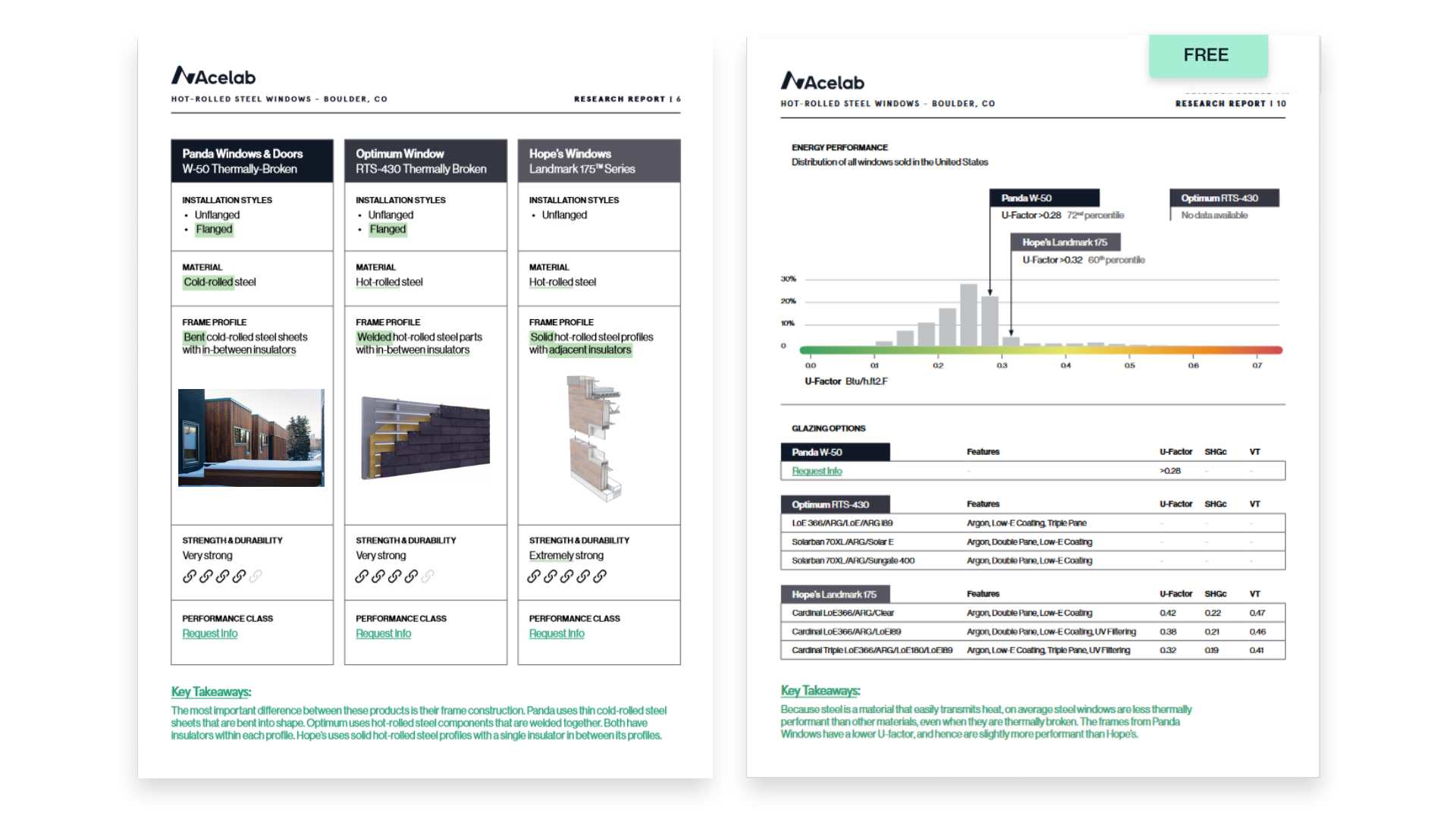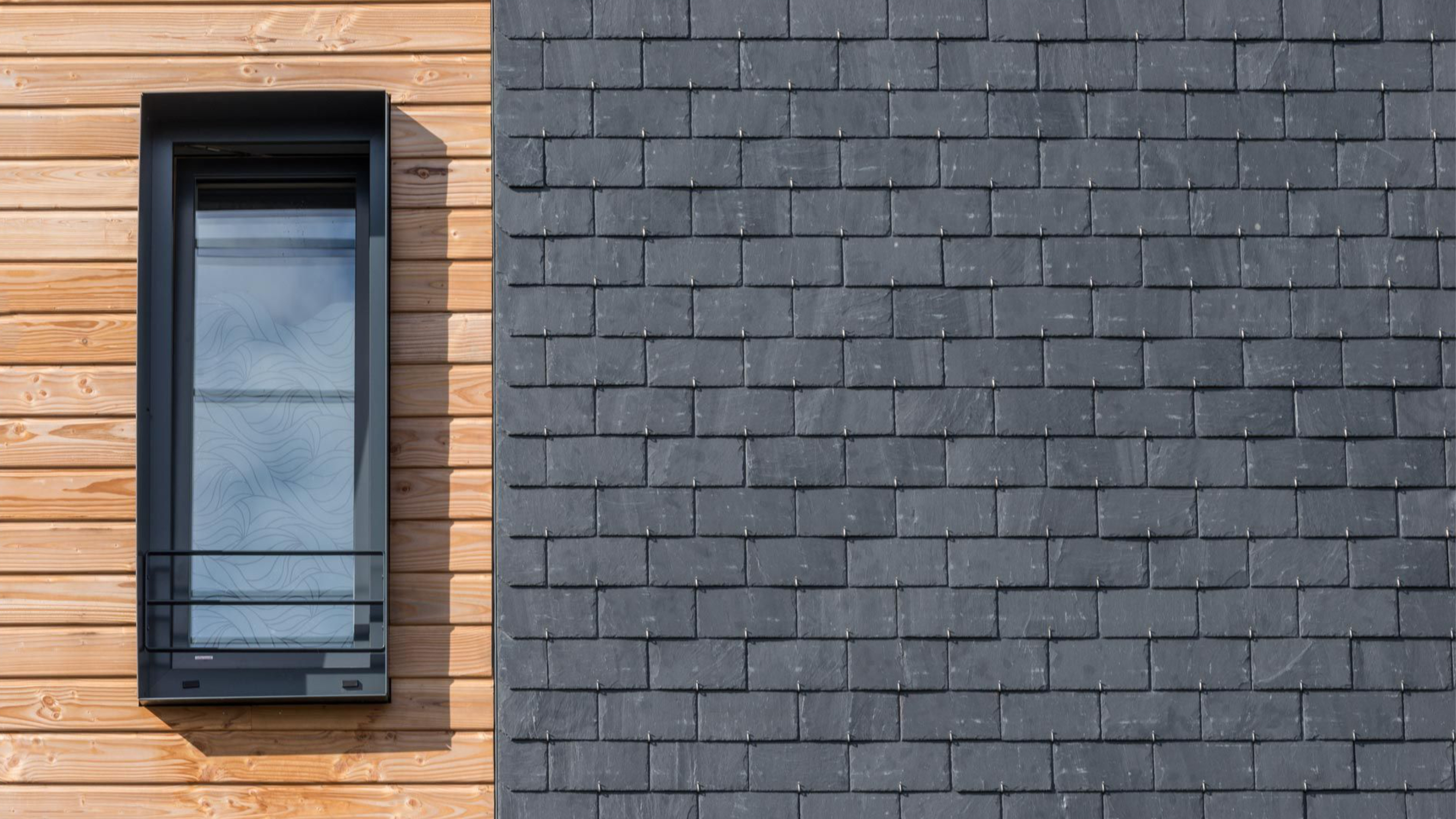3 Options for Sustainable Cladding on Small Projects, and the Benefits of Thermally Modified Wood
One of the benefits of working on small projects is that the options for cladding materials is vast. Some options are more sustainable than others, and selecting a sustainable cladding material is a great opportunity for using environmentally-friendly materials. Careful material selection can really reduce the carbon footprint and contribute to long-term energy efficiency.
In this article, we delve into three prominent sustainable cladding alternatives for small-scale projects. These options are wood siding, slate shingles, and brick. We’ll look at their distinctive benefits, what to bear in mind when choosing them, and how to source them sustainably. We’ll also cover thermally modified wood, and the sustainability benefits it offers.
Things to look out for
SOURCING:
When specifying environmentally-conscious products, keep in mind that a lot of the sustainable credentials come from the way the material is sourced.
Wood can be more eco-friendly than other materials, but poor forestry practices such as clear cutting timber, habitat destruction, and polluting waterways are not sustainable at all. You can avoid these impacts by looking for sustainable forestry certifications - or even looking up where the wood comes from, and checking it out on any satellite mapping service.
The same applies to mines. Slate made the list because most of the companies producing it are following responsible mining practices but many mines do not. Be sure to check the sources of your materials to judge whether your siding materials can really be considered sustainable. As a general background on mined slate, some of the mines where slate is sourced have been in use for over a hundred years. Mines can get a bad wrap, but unless we are using plant fibers, everything we use is mined.
Slate is cut from the earth, cut to size, and then used. Compared to other materials such as glass, concrete, or metal which also rely on mined materials, the mining involved in producing slate products uses tens to hundreds of times less energy. Another consideration is ethical quarry management - source slate from quarries that prioritize ethical labor practices and environmental management. Certifications can help verify these practices.

Custom Recommendations for Sustainable Cladding
Acelab's in-house experts can prepare a report of the best cladding options for your small project, for free. Learn More
REUSE AND RECYCLING:
Each of these materials can potentially have a second life or be reclaimed in some way at the end of its initial service life, making them a great choice for sustainability.
Wood can be shredded and composted or reused. Demand for reclaimed wood is high enough that there is a whole market of fake reclaimed wood! One important aspect of keeping wood environmentally conscious is keeping it simple - for example, protecting it with deep roof eaves instead of petroleum-based resins. Of course, most people simply specify wood because it's beautiful and economical, but the potential for reuse means it can also be sustainable.
Though reclaiming brick is possible, it has some challenges. One thing often overlooked is that removing the mortar from brick is difficult. The effort to chip it off often breaks the bricks, so most bricks are down-cycled into pavers or ground into raw material for new bricks, which is a repeatable process. Even with these challenges, some bricks are salvaged and reused, and have even more beauty and character the second time around without losing any performance.

Example of Reclaimed Brick from South End Reclaimed
Benefits of wood siding for small projects: renewability and beauty
Wood siding is loved by architects and clients alike for its natural beauty and renewability. It’s a great choice for an organic look. Here are some key reasons why wood siding is considered a sustainable cladding option:
-
Renewable Resource: Wood is a renewable resource, meaning it can be replenished naturally over time (assuming responsible forestry practices).
-
Low Embodied Energy: The production of wood siding requires less energy compared to other cladding materials, like concrete or metal.
-
Carbon Sequestration: Trees absorb carbon dioxide from the atmosphere during their growth phase, making wood products like siding a form of sequestered carbon.
-
Biodegradable: At the end of its initial lifespan, wood siding can be easily disposed of, composted, or reclaimed.
Slate shingles for small projects: durability and elegance
Slate shingles offer durability, elegance, and minimal maintenance. They are commonly used in historical restoration projects or for minimalist aesthetics. Here's why slate shingles are considered a sustainable cladding option:
-
Long Lifespan: Slate shingles have an exceptionally long lifespan, oftentimes lasting over 100 years with good maintenance practices. This reduces the need for frequent replacements and means lots of longevity for your cladding.
-
Recyclable: When a slate roof reaches the end of its life, the shingles can be recycled into new products, reducing the demand for virgin materials.
-
Minimal Maintenance: Unlike some cladding materials that require regular upkeep, slate shingles are relatively low maintenance.
-
Natural Material: Slate is a natural stone that is harvested from quarries, requiring minimal processing and avoiding the use of harmful or petroleum-based chemicals.
The advantages of brick for small projects: thermal mass and recycled content
Brick has been loved for centuries for its robustness and versatility. It continues to be a popular choice for both traditional and contemporary designs. Here are the sustainable qualities of brick:
-
Durability: Bricks are known for their durability and resistance to weathering, so they don’t need much maintenance at all.
-
Energy Efficiency: Brick has excellent thermal mass properties, meaning it can absorb and store heat from the sun. This helps regulate interior temperatures and reduce reliance on heating or cooling systems.
-
Recycled Content: Many brick manufacturers incorporate recycled materials into their production process, such as crushed brick or fly ash from coal-fired power plants.
-
Local Availability: Using locally-sourced bricks can also help with sustainability, minimizing the carbon costs of transporting building materials.
There’s wood, and then there’s thermally modified wood.
What is thermally modified wood?
When wood comes from a tree there are three basic components: the fibrous structure of the cellulose, the water, and the sugars. The wood fiber is what we value, the water and the sugars are more of a vulnerability than a feature. The sugars are food for pests, and the water content can vary. This is why we dry wood before using it. This is also why some wood is now available "thermally modified".
In addition to removing moisture, thermally modified wood also "burns" out the sugars. However, because the thermal modification process is done in an oxygen-free kiln, the sugars can be removed without burning the wood. The wood, which is usually common domestic species, comes out with a warm, caramel brown hue reminiscent of tropical hardwoods - and behaves much more like a tropical hardwood, too.

Thermally Modified Wood being removed from a kiln
What are the benefits of thermally modified wood?
With the sugars removed from the wood, thermally modified wood is much more pest-resistant and is so hydrophobic that water based paints and finishes often don't work. Its resistance to water and pests makes it last much longer than regular wood outdoors and some manufacturers will even offer warranties for the wood installed in contact with the ground.
The thermal modification process improves the sustainability of the wood for three key reasons.
-
First, it takes common, local trees such as poplar, ash, and pine and makes them perform as well as trees cut from tropical jungles.
-
Second, it improves the durability of the wood making it last much longer.
-
And third, it does all this by removing problems instead of by adding them with chemical additives or coatings.
The hydrophobic qualities of thermally modified wood doesn't mean you can't add coatings to it. Some manufacturers double down on the durability by adding extra protection, making the modified wood last even longer.
Wood is a sustainable option when sourced and maintained correctly. We think thermally modified wood takes that one step further and is the best of the best of sustainable cladding for architectural facades.

